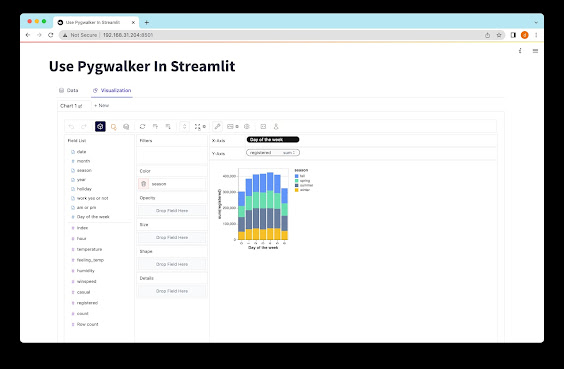Augmented Analytics: The Latest Data Analysis Trend in the Field
# Augmented Analytics: Changing the Data Analytics Space Data analytics has been changing the business landscape for several years now. Organizations of all sizes, across industries, have been relying on data-driven insights to make informed decisions and achieve business objectives. However, as the volume, variety, and complexity of data continue to grow, traditional data analytics tools and techniques are becoming less effective. This is where augmented analytics comes in - it is the latest technological advancement that promises to transform the way we analyze data. ## What is Augmented Analytics? Augmented analytics refers to the use of machine learning (ML) and natural language processing (NLP) technologies to automate data analysis and make it accessible to business users without requiring specialized data science skills. In other words, it is a set of tools and techniques that augment the capabilities of human analysts by automating some of the repetitive and time-consuming steps in the data analytics process. Augmented analytics aims to address some of the key challenges that traditional data analytics faces: - **Data overload**: The sheer volume of data generated by businesses today makes it virtually impossible for human analysts to process and analyze it all manually. - **Lack of data literacy**: Most business users lack the technical expertise required to perform complex data analytics tasks. - **Limited insights**: Traditional data analytics tools typically rely on pre-defined queries and dashboards, which can limit the user's ability to discover new insights and patterns in the data. Augmented analytics helps overcome these challenges by applying ML and NLP algorithms to analyze data and generate insights automatically, create [data visualizations](posts/data-visualization-examples), thereby freeing up human analysts to focus on more complex and strategic tasks. ## How Does Augmented Analytics Work? Augmented analytics works by leveraging ML and NLP algorithms to automate various stages of the data analytics and [data visualization](/posts/data-visualization-examples) process. Here's a brief overview of how it works: ### Data Preparation The first step in any data analytics project is to prepare the data for analysis. Augmented analytics automates this process by using ML algorithms to identify and clean up data inconsistencies, and by suggesting relevant data sources and schemas based on the user's query. ### Data Discovery Data discovery involves exploring the data to identify patterns, trends, and anomalies. Augmented analytics automates this process by applying ML algorithms to automatically identify insights and generate visualizations that highlight the most important findings. ### Natural Language Processing NLP is a crucial component of augmented analytics, as it allows business users to interact with the data using natural language queries. NLP algorithms can interpret complex queries and generate meaningful insights, without requiring users to know SQL or other specialized query languages. ### Predictive Analytics Predictive analytics is another key application of augmented analytics. By applying ML algorithms to historical data, augmented analytics can generate predictions and recommendations for future outcomes. This can help businesses make more informed decisions and optimize their operations. ## Benefits of Augmented Analytics The benefits of augmented analytics are numerous and varied. Here are some of the most significant ones: ### Improved Data Quality and Accuracy By automating the data preparation process, augmented analytics can help ensure that data is clean, consistent, and accurate. This helps eliminate errors and biases that can lead to incorrect conclusions and decisions. ### Increased Speed and Efficiency Because augmented analytics automates many of the repetitive and time-consuming tasks in the data analytics process, it can significantly reduce the time and effort required to generate insights. This means analysts can focus on more strategic and complex tasks, while still delivering results in a timely manner. ### Democratization of Data Analytics Perhaps the most significant benefit of augmented analytics is that it makes data analytics accessible to a broader range of users. By using NLP to interpret natural language queries, augmented analytics can enable business users without specialized data science skills to explore and analyze data on their own. ### Faster Insights and Better Decision-Making With augmented analytics, businesses can generate insights and recommendations faster and more accurately than traditional analytics methods. This can help them make more informed decisions and achieve their business objectives more effectively. ## Challenges and Limitations of Augmented Analytics While the benefits of augmented analytics are clear, there are also several challenges and limitations that businesses should be aware of: ### Lack of Understanding Many businesses may not yet fully understand what augmented analytics is, and how it differs from traditional analytics methods. This can make it difficult to justify the investment in augmented analytics and may lead to resistance from some stakeholders, who may perfer old fashioned BI tools such as [Tableau](/posts/tableau-alternatives) and [Power BI](/posts/power-bi-alternatives). ### Data Security and Privacy As with any data analytics tool, there are concerns around data security and privacy when using [augmented analytics](https://ift.tt/bh1GyMV). Businesses need to ensure that the data they are analyzing is appropriately secured and that user access is appropriately controlled. ### Over-Reliance on Technology While augmented analytics can automate many tasks, it is still important for human analysts to be involved in the analytics process. Over-reliance on automated tools may lead to reduced creativity and the ability to generate unique insights. ## Conclusion In conclusion, augmented analytics is poised to revolutionize the data analytics space. By automating many of the repetitive and time-consuming tasks in the data analytics process, it can help analysts generate insights faster and more accurately than traditional methods. Augmented analytics also democratizes data analytics, making it accessible to a broader range of users and enabling businesses to make better, more informed decisions. While there are some challenges and limitations to consider, the benefits of augmented analytics make it a technology that businesses should seriously consider in their data analytics strategy.
Read more about Data Analysis
Read more about Data Analysis

Comments
Post a Comment